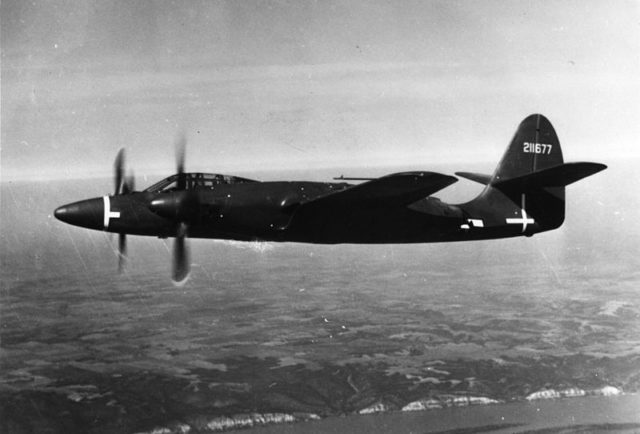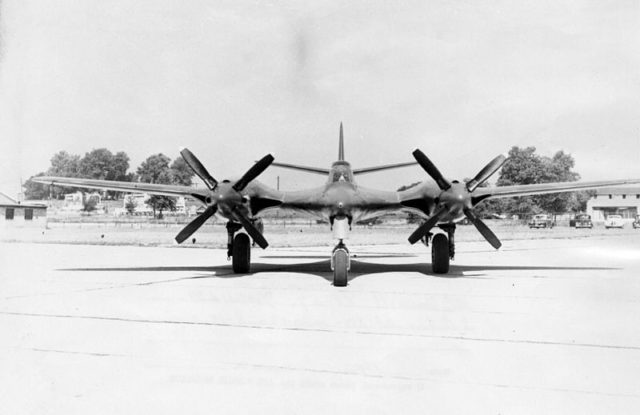Aviation began to boom during the Second World War, as engineers and innovators on both sides worked tirelessly to come up with the most ingenious aircraft to out-manoeuvre their opponent. A lesser known, yet highly ambitious undertaking funded by the United States Army Air Force through McDonnell was a single-seat long range interceptor with twin engines, nicknamed the ‘Moonbat’, or technically known as the McDonnell XP-67.

As the war in Europe started brewing stronger, the United States anticipated the grim unfolding and decided to put all her military might on alert. In 1940, USAAF issued a formal ‘Request for Proposal’, asking for engineers to come up with high-speed, high altitude, long range interceptors with the ability to point and destroy enemy bombers. The instructions were unambiguous and very straight forward, the military needed an aircraft that was efficient and with the ability to outperform all the existing fighter aircrafts of the time.
McDonnell Aircraft, an aerospace parts manufacturer, was trying to emerge as an aircraft manufacturing company, and saw an opportunity in the proposal requested by the military. In a bid to commence their first aircraft manufacturing project McDonnell responded to the request with detailed specification and drawings of their proposed Model. McDonnell’s suggested model would be powered by an innovative and less known geared drivetrain, that would use one Allison V-3420 engine embedded in the fuselage, which would then power the twin pusher propeller mounted on the wings.
McDonnell put forward all their best ideas for the proposal, however there were 22 other manufacturers who had responded to the Army’s request, some with far greater manufacturing experience. As compared to the other proposals, McDonnell’s idea was not just relatively unimpressive, but it had features that were unproven and untested, such as their proposed drivetrain. When Army personnel analysed and scored the submitted proposals Model I came 21st out of the total 23 proposals, this came as a surprise to the ambitious engineers at McDonnell, and any hopes for government funded aircraft manufacturing seemed to die out. To the ignorance of McDonnell leaders the Air Corps were highly impressed by the nascent company’s futuristic ambitions, and later decided to authorise a $3,000 contract for the re-engineering of the craft.

The radical design of the XP-64 required extensive wind tunnel testing and elaborate fine-tuning to meet the advanced aspects it required. McDonnell along with a few other manufacturers (NACA and University of Detroit) decided to separately launch an extensive series of aerodynamic test programs for the aircraft. Since McDonnell’s was new in the arena of aircraft manufacturing every single aspect of the plane was a challenge for the engineers, especially the exterior of the aircraft, that had to be thinner than any other aircraft and also precisely shaped and perfectly smooth to meet the required characteristics. Overcoming this hurdle meant a landmark achievement for the company for future endeavours. However, soon after the wind tunnelling tests commenced a number of anomalies started emerging regarding the instability of the engines, which struggled to maintain the cool by restricting airflow through engine nacelles. The problems for the new manufacturer grew as it became apparent to the engineers that wartime demands had significantly tied their hands in terms of what they could get from other locations to overcome the problems. On top of all that, the project faced serious delays as all three companies rushed to use the wind tunnelling facilities at Langley, Virginia, and made it over crowded.

When the first prototype model was launched, it started facing serious engine problems, and test pilots did not feel comfortable manoeuvring the craft, which did not show promising signs of withstanding extensive mobility in the air. On a number of occasions the engines caught fire, and other times the aircraft failed to gain the speed that engineers had initially promised. When it was returned to the factory engineers tried their best to overcome the persistent problems, however, no solution worked to get rid of the issue and the engines were constantly plagued by the chronic overheating and inadequate power output. During the earlier test flights the XP-64 could only go as fast as 405 mph, far less than the promised top speed of 472 mph.
